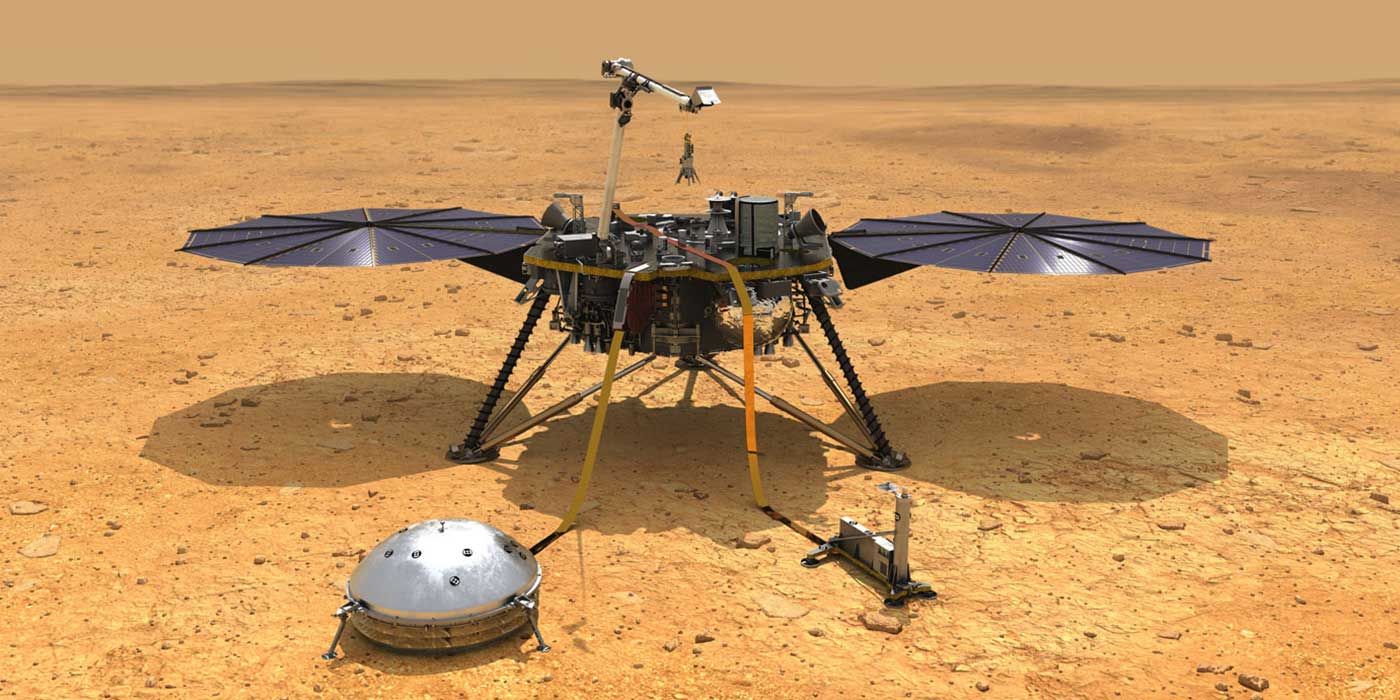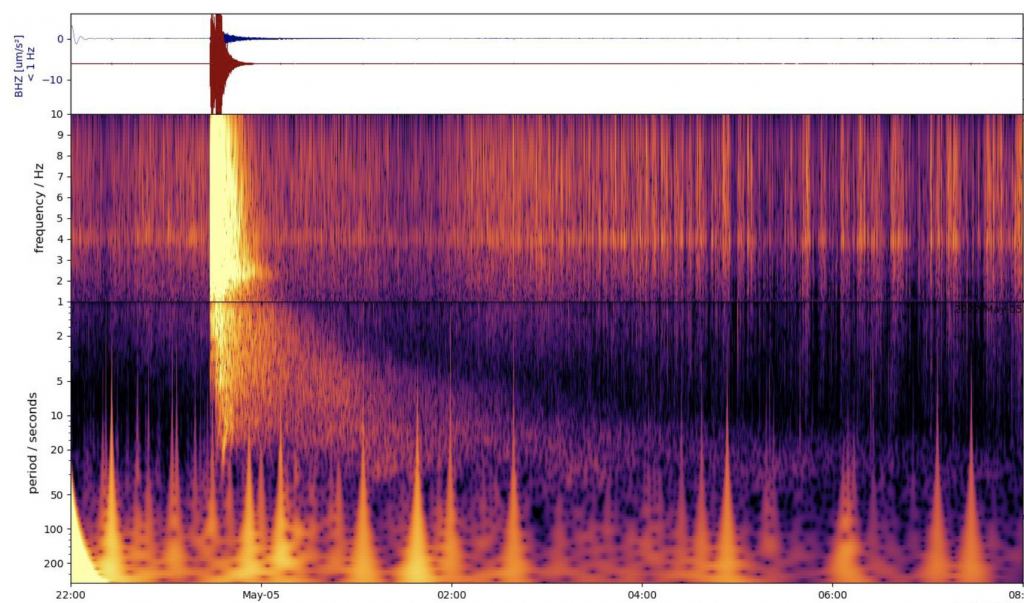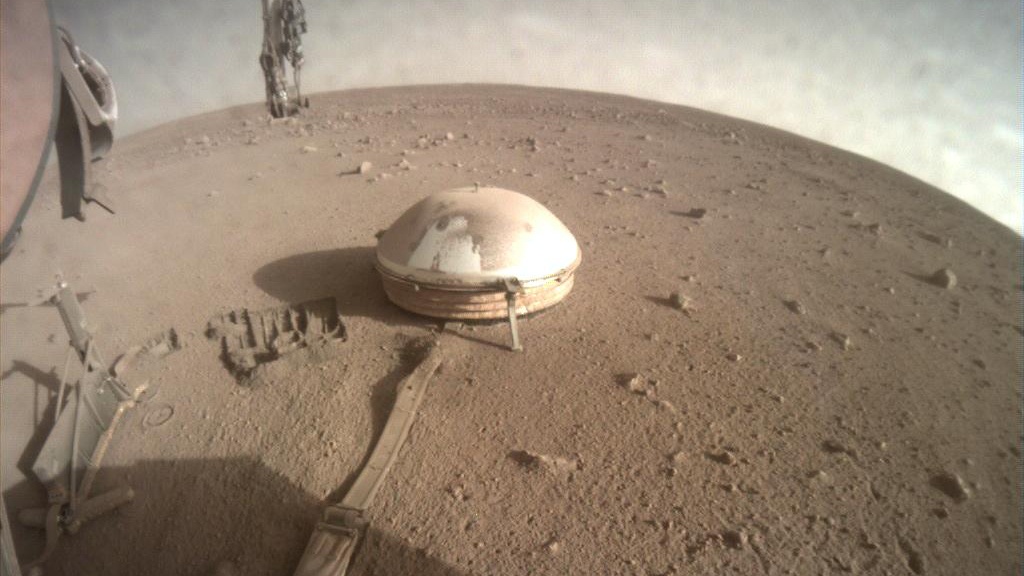
The ground shakes. Paintings tilt. Walls crack. Rubble may fall. On Earth, we understand how and where these events happen due to the discovery of plate tectonics – the continental crust’s creation, movement, and destruction. However, when astronauts placed seismometers on the lunar surface during NASA’s Apollo mission era, those instruments recorded quakes on the Moon. In the 1970s, the Viking landers also recorded quakes on the surface of Mars. Since neither of these worlds has plate tectonics, scientists set about collecting more data to understand the phenomena, which led to the recent NASA InSight lander. Now, a new paper in Geophysical Research Letters explains how the largest recorded seismic event on Mars provided evidence for a different sort of tectonic origin — the release of stress within the Martian crust.
On Wednesday, May 4, 2022, InSight recorded a record-breaking magnitude 4.7 marsquake with an epicenter about 2,200 kilometers away from the lander. The resulting tremors shook the planet for the next six hours. The event was large, but scientists had no reason to believe the cause was anything different from the usual meteoroid impact. After all, InSight had recorded no fewer than eight impact-related quakes, the two largest of which resulted in separate craters about 150 meters in diameter. This new event – cataloged as S1222a – generated a quake energetic enough for the resulting crater to be on the order of 300 meters in diameter with a potential blast zone nearly 200 kilometers wide.

All three events had several similarities, including long-period surface waves. There were, however, differences in the wave data types collected. Lead author Benjamin Fernando from the University of Oxford still suspected an impact as the cause of S1222a. He gathered up a team to find the crater, requesting help from a number of organizations, including the European Space Agency, the Chinese National Space Agency, the Indian Space Research Organisation, and the United Arab Emirates Space Agency, all of whom have or had missions in orbit around the red planet. These orbiters have been collecting a wide range of images, covering the entire visible spectrum as well as some near-infrared (Mars Odyssey) and ultraviolet (Emirates Mars Mission and MAVEN) bands.

The team ended up taking several months to search the nearly 144 million square kilometers of Martian surface using low- and medium-resolution images from all of their respective orbiters. No new craters in the correct size were discovered. Nor did they find any signatures of potential new craters such as a dust cloud from the impact or a dark patch representing the expected blast zone. Without the mechanics of plate tectonics, the team concluded that the 4.7 temblor had to have been caused by the “release of enormous tectonic forces within Mars’ interior”. As Fernando explains, “We still think that Mars doesn’t have any active plate tectonics today, so this event was likely caused by the release of stress within Mars’ crust. These stresses are the result of billions of years of evolution; including the cooling and shrinking of different parts of the planet at different rates.”
While the imagery ruled out an impact cause for this marsquake, further analysis of the wave data is necessary to understand fully the nature of Mars’ tectonic mechanics, and that analysis is ongoing. Unfortunately, NASA’s InSight reached the end of its mission in December 2022, so now the data collection focus will be on upcoming lunar missions from another assortment of international organizations. We look forward to more collaborations in the quest for understanding our solar system.
Original Source: University of Oxford press release
This article was originally published at universetoday.com





